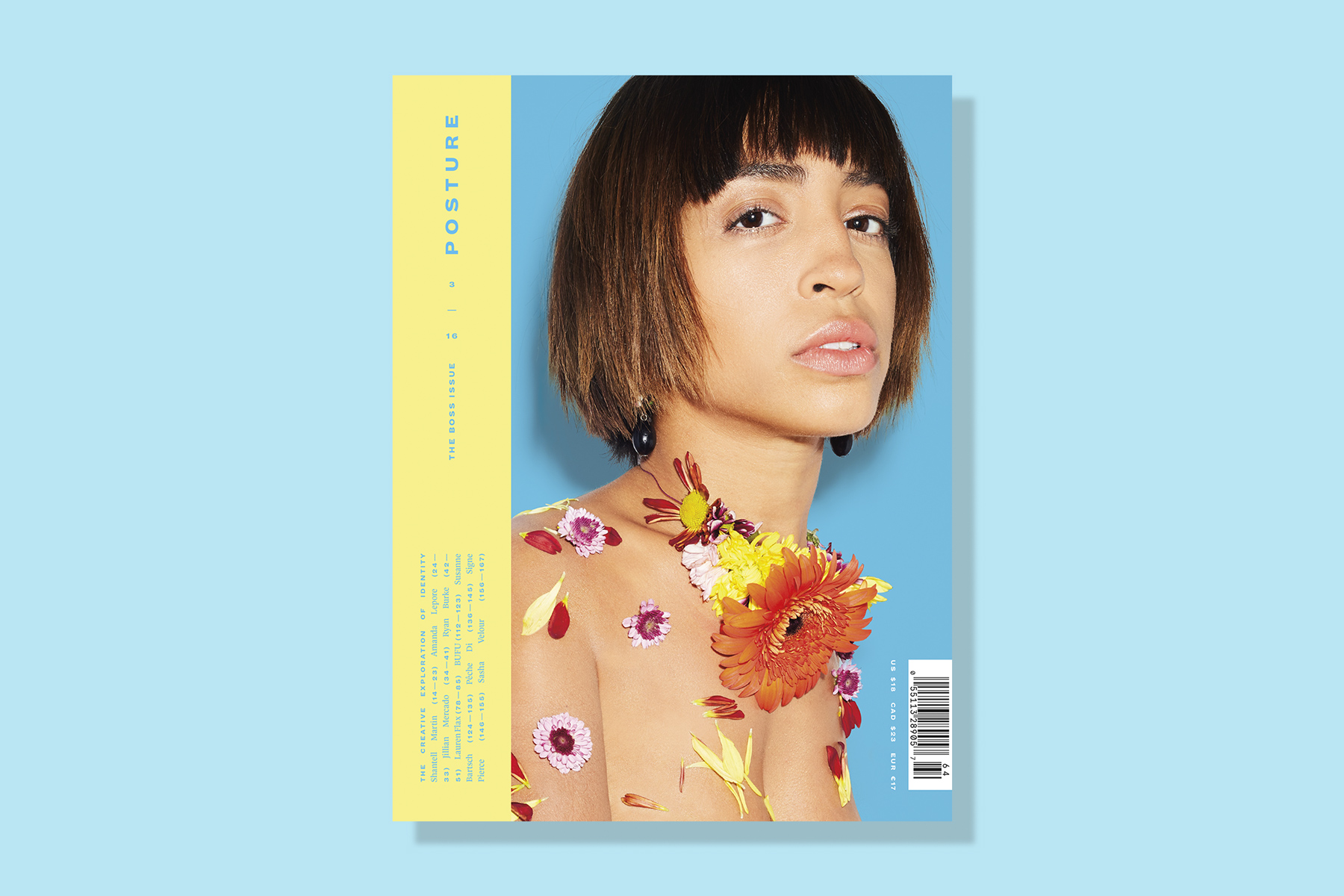Meet New York-based writer, designer, and curator John Chaich whose curatorial endeavor Queer Threads, originally exhibited and organized in collaboration with the Leslie-Lohman Museum, brought together 26 artists with a focus in fiber arts from around the world. Now at the end of its tri-city tour between New York, Baltimore, and Boston, the show will materialize in the form of a book designed by Todd Oldham Studio boasting a collection of works by 30 artists specializing in fabrics and threads alongside interviews by heavy hitters in contemporary culture.
“Because fiber art is so hands-on, it taps into a DIY spirit that many of us seek in an age where “pride” is so packaged, consumer-driven, and homonormative.”
John received his MFA in Communications Design from Pratt Institute and has dedicated the last 15 years of his life to building partnerships and developing programming for both nonprofit and commercial clients. While the controversies and frivolities embedded in the contemporary art landscape make it difficult to perceive how exhibitions produce conscious sentiment and community in the modern world, designing shows which highlight and bring together the voices of the marginalized in an effort to educate and bridge the gaps in the zeitgeist remains a powerful and important talent. John is someone who sincerely seeks to utilize curation and design as a means for activism.
Queer Threads is a project that “spotlight[s] artists across generations and locations, and, perhaps most importantly, present[s] how queerness informs their work in fiber and vice versa.” As a reversal on the theme of the book, I asked all of the artists* of the forthcoming Queer Threads monograph to submit a question for John to unpack the intricacies behind putting together an exhibition of this nature and resolve any lingering facts about him they may have been eager to learn.
This editorial captured by photographer Kirk Lorenzo inside Nathan Vincent’s Locker Room installation at the Boston Center for the Arts Mills Gallery is emblematic of the way Queer Threads explores the dialogue between fashion, queerness, and fiber art. It seeks to investigate the relationship between bodies and space and art and craft, in particular through subverting the notion of fiber art as traditional “women’s work.”
*The following interview is solely comprised of questions by those artists who wished to participate and does not represent all of those featured in the Queer Threads book.
Angie Wilson: What inspired you to curate this show?
Three things really: First, I grew up in a home where my mother and grandmother both quilted and crocheted and embroidered, so I’ve always held these traditions close to my heart and naturally was attracted to queer artists working with fiber the more and more I saw their work. Next, in the early nineties after I had just come out, I also saw the NAMES Project AIDS Memorial Quilt on the mall on Washington; this was the last time that the Quilt would be displayed in its entirety, and I was deeply moved by the anonymous hands who created each panel. I have subscribed to BUST magazine and followed third wave feminism’s take-back-the-craft zeal, and around a decade later, I collaborated with two inspiring women to co-curate a show called greater than or equal to: women work the house that was inspired by the 1972 Womanhouse project and featured artists and crafters installed throughout my friend Lyz’ house. So feminist collaboration, AIDS activism and my own matrilineage all inspired Queer Threads.
![June wears mask, bikini, and skin cape by LACTIC [@lacticincorporated] | Kyle wears mask by ELKEL [@elkel.nyc] x Diego Montoya [@diegomontoya3d], choker by NAC Equipment | @mister_nina, and top by SAGANYC [@saganyc]](http://posturemag.com/online/wp-content/uploads/2017/02/QueerThreadsPM_07.jpg)
Aubrey Longley-Cook: What drew you to curate exhibitions and why are you attracted to fiber work?
I like to frame concepts, I like to arrange things, I like to write, I like to visualize, I like to get things done, but I don’t like making things with my own hands. So those who can’t, curate, I often joke. I get off on the gestalt of the process and product: what can the organization of a selection of works communicate together? In addition to the personal inspirations and connections I feel to fiber work, the exhibition that I had curated previously was all language or text-based works, so I was hungry to explore work that was more haptic.
Rebecca Levi: You’ve been attracted to both fiber art and book arts. What is the connection between these for you?
Well, both books and textiles are based in fiber – be it the pulp or thread. I’m also really drawn to how artists use found objects and explore the meaning embedded in materials, so both Queer Threads and the exhibition that I recently curated at the Center for Book Arts in Manhattan, Queering the BibliObject, have a generous amount of works using found matter like discarded afghans or repurposed paperbacks. It’s a little crazy that amid exhibitions on queer fiber art and queer book objects, Todd Oldham and AMMO books approached me to turn Queer Threads into a book.
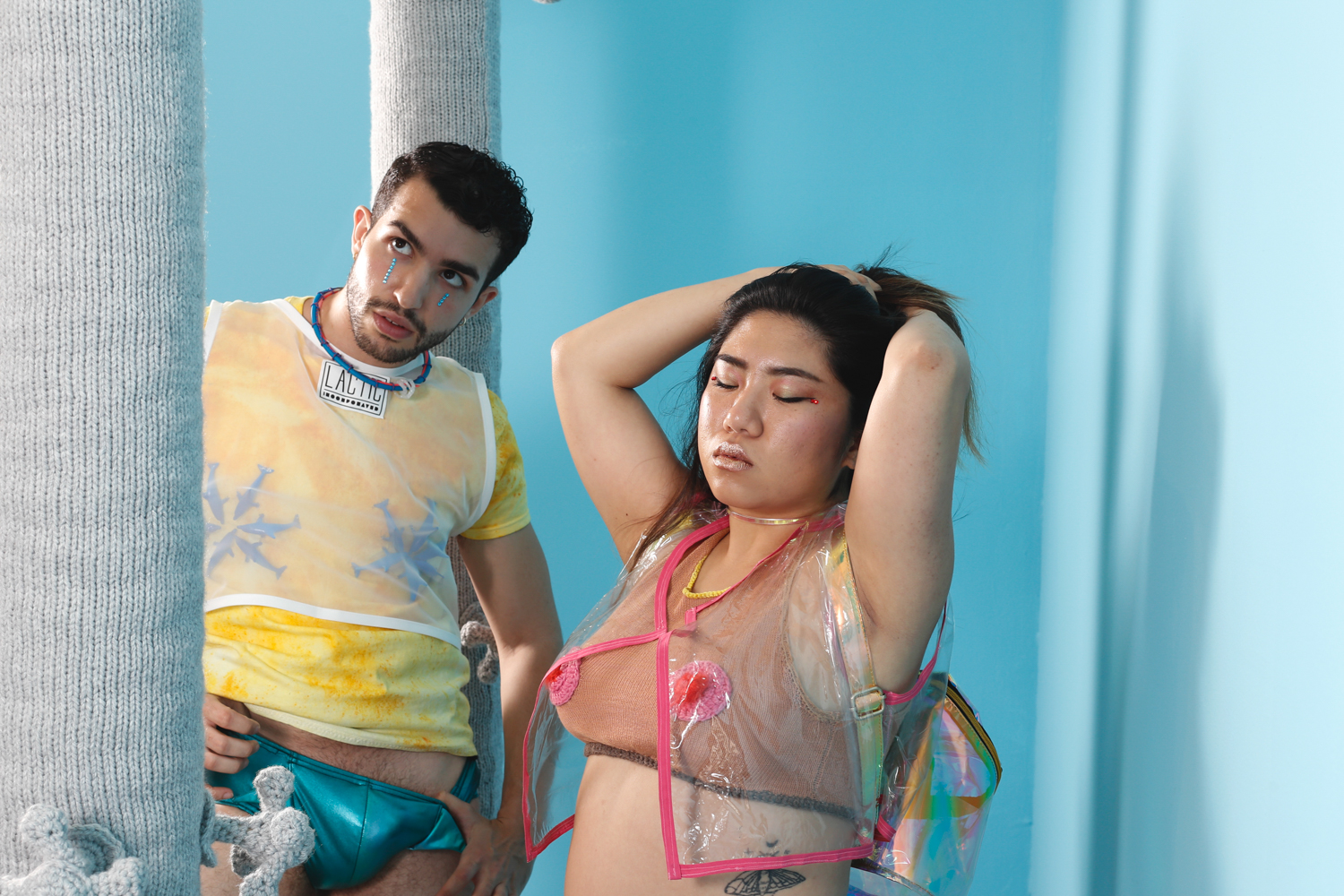
Harmony Hammond: There are many artists in the Queer Threads book who were not included in the exhibition. How did you choose which artists to include in the exhibit and what informed your choice of works?
Curating is full of coulda-shoulda-woulda moments. In reality, availability, proximity, and budget often influence what work is finally shown. My curation of the exhibition was largely driven by what I wanted to communicate between works in the physical space. In the gallery, I aimed to have a balance of sculptural and wall work, immersive and intimate experiences, figurative and abstract content. Although this was not explicit in the language in gallery materials, I organized the work under three soft or loose themes: Loose Threads – work that deconstructs or queers fiber techniques or materials; Loose Cannons – work that is inspired by or responds to activism; and the Fabric of our Lives – work that addresses private and public spaces like the home, media, or even the locker room. I really enjoy designing the exhibition layout and hinting at visual relationships between works through color and texture, and I loved adapting the exhibition design to three different spaces in New York, Baltimore, and Boston.
But just as the exhibition doesn’t attempt to be the definitive survey of contemporary fiber art by LGBTQIA artists, the book is not an exhibition catalogue. In the book, I aimed to spotlight artists across generations and locations, and, perhaps most importantly, present how queerness informs their work in fiber and vice versa. Both the exhibitions and book are intergenerational and intermediate, I hope.
Nathan Vincent: Art exhibitions of this kind have the potential to draw together disparate communities and also raise tensions that may not have been obvious from the start. How do you view these results as the curator? What has struck you the most about the effects of this exhibition?
Two of the most satisfying things about Queer Threads have been to not only witness friendships form among the featured artists, but also to hear some very necessary conversations about issues of parity, access, and privilege – my own included. In Baltimore, a roundtable discussion brought in artist-activists from the community with fiber faculty to discuss the parallel between fiber’s minority status in the art world and the intersectionality of issues that some work in Queer Threads evokes – or not. It was interesting to see how the critical response from the Fiber: Sculpture 1960-Present exhibition at the ICA Boston and Man-Made: Contemporary Male Quilters show at the Craft & Folk Art Museum in Los Angeles informed dialogues around Queer Threads.
The exhibitions have shorter shelf lives, but Queer Threads literally opens the book to more projects to be led by other makers and thinkers to ask different questions through different work.
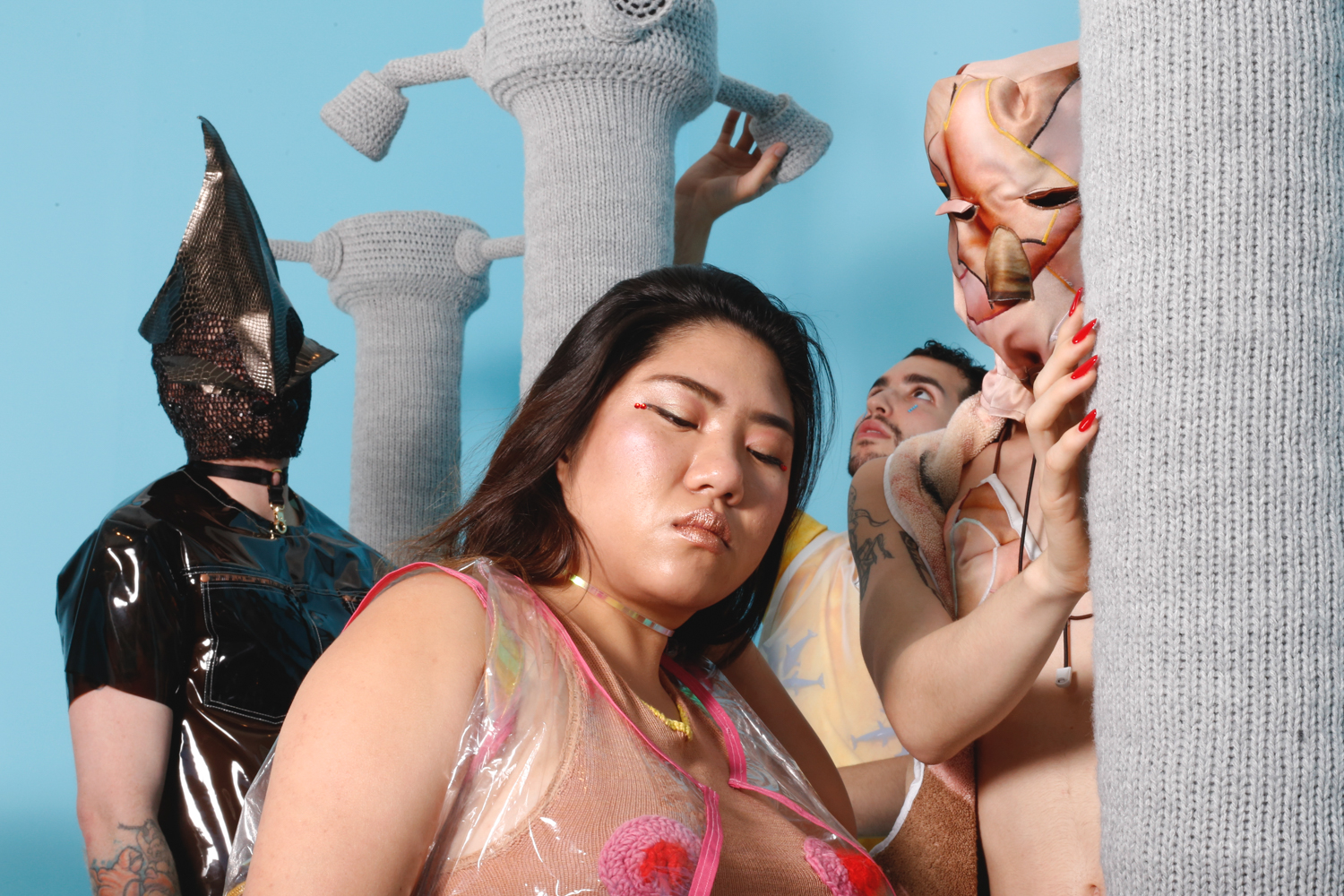
Jesse Harrod: Did you expect the challenges which arose through the show? What were some of the larger roadblocks you had to overcome and how did you overcome them?
I think one of the hardest challenges of any curatorial project is the balance of fantasy and reality: “What work do I want?” and “What work can I get?” let alone, “Where and how and within this budget?” Sometimes, it is a matter of finding the right work at the wrong time – this was equally inspiring and frustrating. On the other hand, deadlines and budgets are helpful constraints that made me stop researching and start deciding and designing.
I think I also gave myself a more intentional challenge: showing one large work by a very critically acclaimed artist that would take an entire wall or saving that space for four smaller pieces by lesser-known artists whose perspectives are less often heard or seen.
L.J. Roberts: Can you speak to the binary traps that exhibitions that focus on textile mediums often fall victim to? How did Queer Threads fail or succeed in challenging binaries?
Some of those binary traps could include the distinction between art and craft, the attention to men employing “women’s work” in their practices, gay and lesbian and queer, fiber and textile, supporting the artistic canon or challenging it.
Two ways of looking at work in Queer Threads that I did choose to articulate were: 1) work that features queer content that is executed using a fiber craft traditional technique, or 2) work that remixes or queers the use of material or technique itself. Another way to put it is queer threads versus queering threads. Sometimes there is work that does both. Someone could consider these frameworks binaries. I don’t know if I can objectively view success or failure at this point. One person’s trap is another person’s treasure; binaries can empower someone as much as they can displace another.
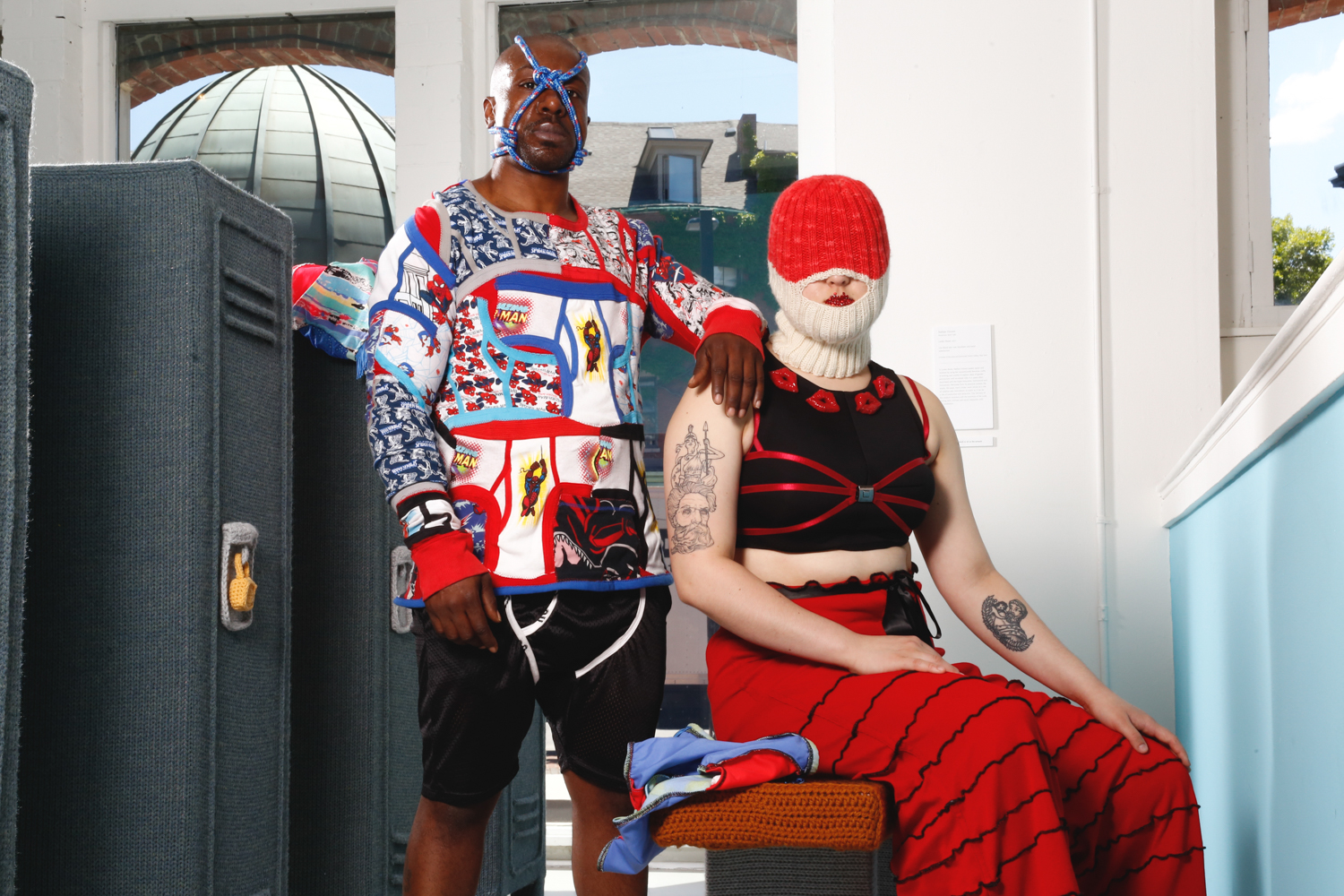
Larry Krone: Considering the span of time that has passed from the inception of Queer Threads to now, all of the dialogue within the parameters of the exhibit (interviews for the book, panel discussions, artists’ presentations, and tours) and outside of the exhibit (Orlando, North Carolina’s legislature, Caitlin Jenner) that has occurred, and the rapidly, constantly changing language and attitude around and within queer culture, would you change anything about the structure and theory of Queer Threads if you organized it today?
In the aftermath of this presidential election, I keep picturing Allyson Mitchell’s protest banners made of found afghans and felt letters and thinking about the political power of craft.
Amid the homophobia, xenophobia, misogyny, classism, racism, ableism, and white nationalism that is feeding hate in America, I am so proud to present something so unabashedly queer and intergenerational, international, and hopefully intersectional. Its so rare to find this many contemporary queer and ally thinkers and makers in one book; I hope their voices and visions will inspire us all to create, love, and fight the good fight.
It has been five years since I first brainstormed the first idea that became Queer Threads in 2014 at Leslie-Lohman Museum of Gay and Lesbian Art, and nearly two years since work began on the book. You can imagine how many ups and downs and opportunities and constraints have happened in between which have influenced the final choices seen in the gallery or in your hands. My curiosity for why queer artists are so drawn to working in fiber art remains strong. If this project evolved, I’d consider creating a curatorial structure that is more additive and interactive – how can audiences respond to or contribute to the artists on view? Can a kind of fiber-based queer exquisite corpse project work? There have been great strides in visibility for some in the LGBTQIA community, but so much hate for others. How can fiber art projects heal wounds or raise visibility for those who have been systematically made invisible? As a cis gay male given the opportunity to create space to discuss queerness, I should constantly check if it feels like #QueerThreadsSoWhite or does my work help #BlackLivesMatter or #TransLivesMatter?
Sheila Pepe: I’m aware the you not only curated the exhibition, but also designed the educational program and media presence of the exhibition. How much is your curatorial vision also a design vision? For example, a complete way of designing audience interaction with a set of visual ideas.
An exhibition or book doesn’t just exist on the walls or pages – it’s in the dialogue created through programming, partnerships, and people. That’s why the Queer Threads book is not a solo author or authority writing about each work, but 30 artists interviewed by 30 culture makers and critiques. The more perspectives the merrier, I say.
Of course, the host institutions and publisher also have played a strong role in determining the programming and partnerships.One way I see my role as a curator or editor is to create the space – both physical and conceptual – to lay out some dots that audiences can connect.
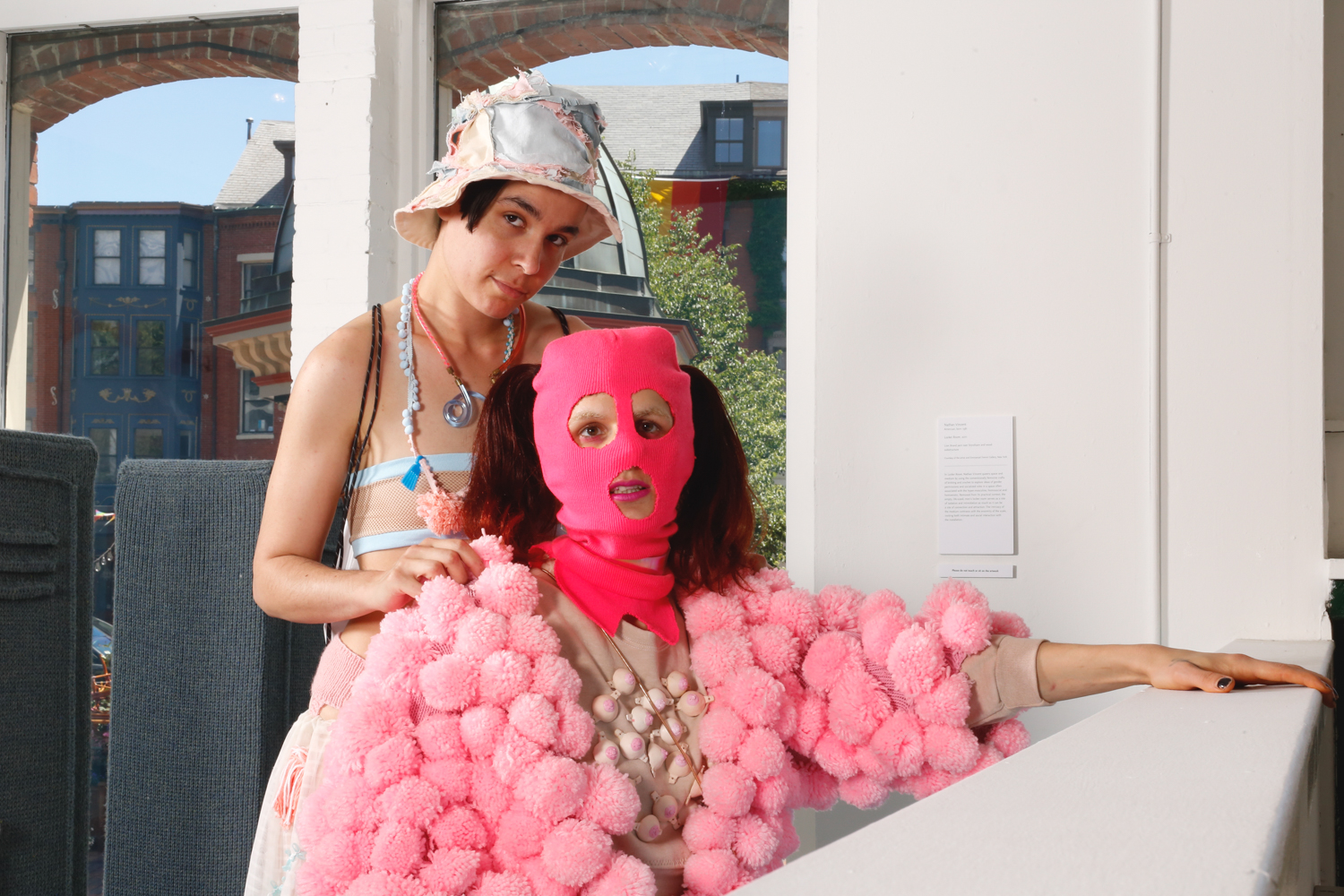
Ben Cuevas: What do you think makes the intersections of queerness and fiber art particularly relevant today?
By blurring the binaries of fine art and handicrafts, fiber art can break down binaries, and LGBTQIA culture at large is blurring gender presentation and sexual identity more creatively than ever. I think there’s a thread – pun intended – between the revival of craft through the third wave feminists earlier in the ‘90s to queer fiber art over the past decade. Today, I also see a younger generation of queer artists who want to honor the work of older artists and culture makers by reexamining object or movements like the AIDS quilt, feminist fiber artists of the ‘70s, protest banners, and even late queer fashion designers and creatives. Because fiber art is so hands-on, it taps into a DIY spirit that many of us seek in an age where “pride” is so packaged, consumer-driven, and homonormative. I think this photoshoot in Nathan Vincent’s Locker Room shows us how compelling the dialogue between indie fashion, queerness, and fiber art can be.
Chiachio-Giannone: ¿Cómo es el dialogo de las obras de los artistas queers de diferentes regiones (tanto dentro de USA como también en relacíon a latinoamérica)?
How is the dialogue created by the work of queer artists in different regions, such as between USA or Latin America, related?
In the iterations of the Queer Threads exhibition in Boston and Baltimore, pieces by you and Athi Patra Ruga of Cape Town particularly encouraged dialogue around colonialism and the tension between Western influences and indigenous cultures, as seen through your use of fiber craft techniques. The presence of race through international artists also prompted a dialogue about race in America.
Aaron Macintosh: Do textiles/fibers/string/thread find their way into your sexual life? What are the intersections, if any?
Just as I’m far too impatient to make fiber crafts myself, I’m far too lazy to use strings, fibers, and textiles in bed, although I sometimes sleep under a quilt that my grandmother made. I do have a not-so-soft spot for a man in knitwear, and am more than open to invitations.
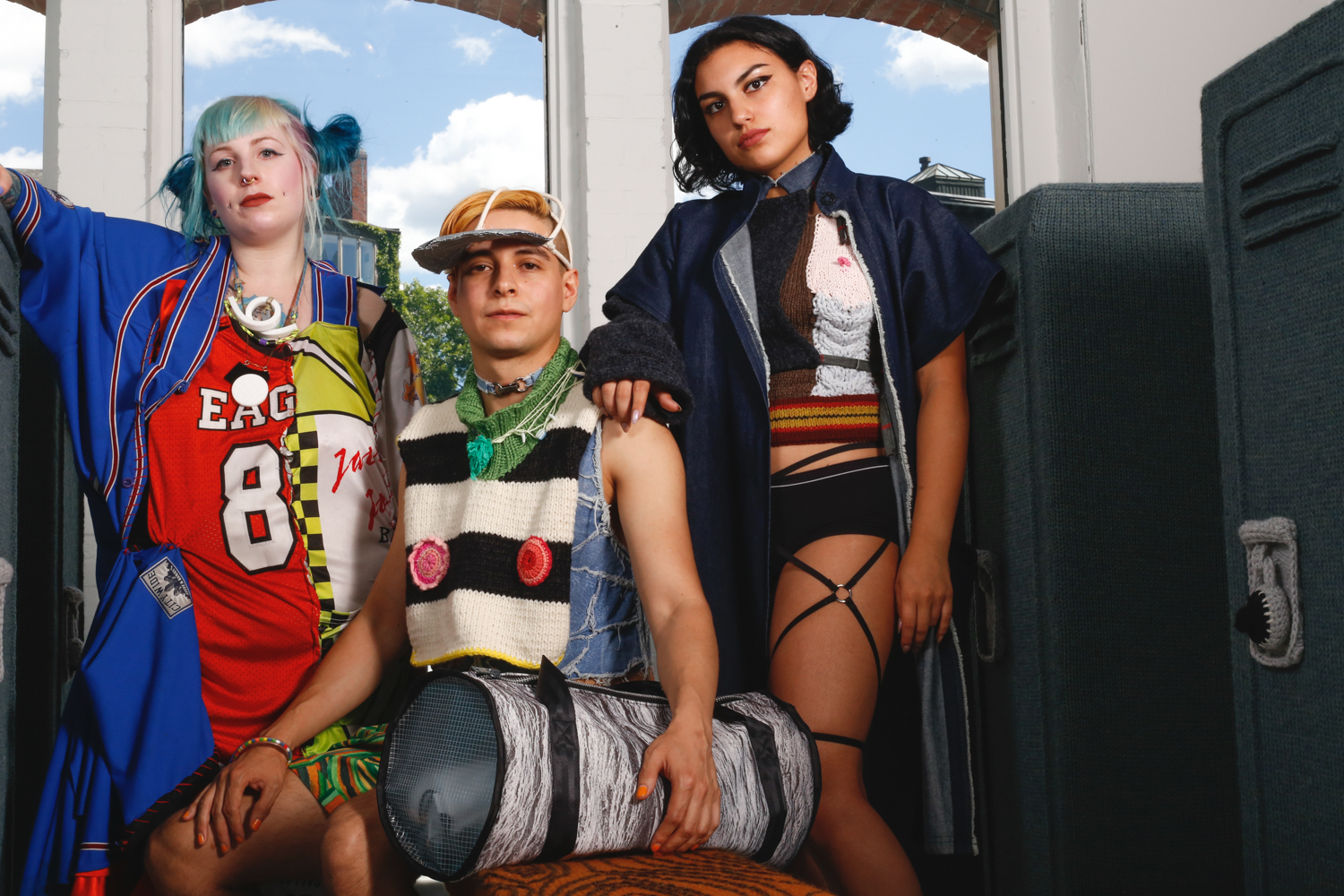
Chris Bogia: How do you stay so upbeat and charming amidst all the demands and chaos of wrangling all of us artists and interviewers to make this ambitious book?
Well, charming questions like this certainly help. When I’ve had the opportunity to talk to curatorial studies, I’ve found myself telling them that 80% of the work of an independent curator is management – of details, forms, logistics, relationships, time, budgets, and sanity. These exhibitions and this book have been labors of love for me, and frankly, enjoying working with the artist is as important to me as loving their work itself.
Pierre Fouché: Can we expect any more queer related projects from you in the future?
For better or worse, I am not sure if I can do a project that isn’t queer. I have to feel a personal connection to the work I’m exploring and my queerness is my worldview. To that end, in the Queer Threads coffee table book, it has been interesting to hear how much or little the featured artists embrace queerness as a part of their practice. For every artist who’s more likely to say, “I’m a humanist and avoid labels,” there are ones who say, “I wouldn’t be making this work if I wasn’t gay.” I like this complexity and diversity and disparity.
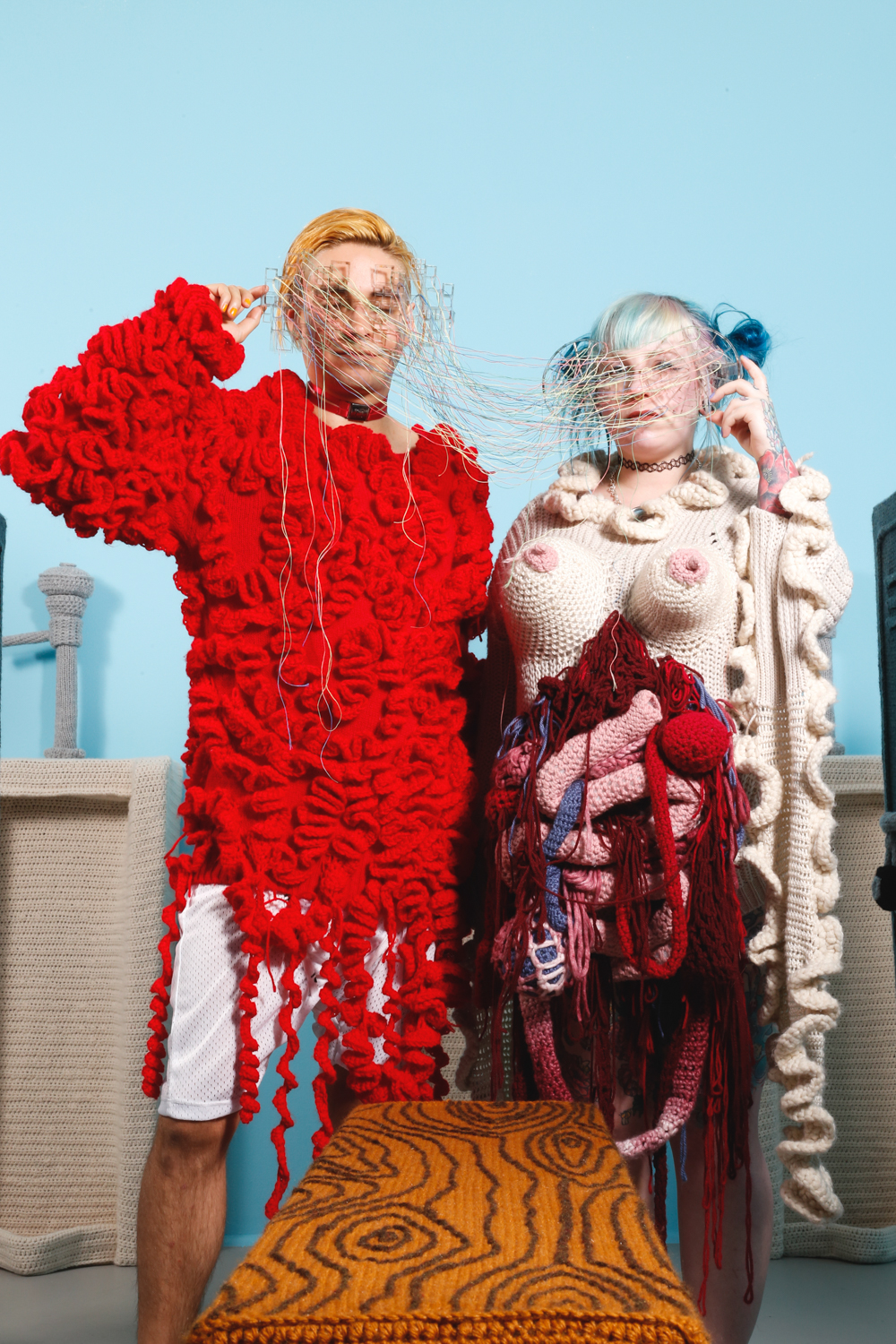
Liz Collins: Will you work on the Hanky Code show with me, and if yes, when can we get started?
That would be so much fun! I’m particularly intrigued by the language and visual systems that we’ve created as queer people, and I love the relationship between cloth, skin, and communication in the hanky code. I’ve also been daydreaming about curating a project that responds to or reimagines Hal Fischer’s 1977 book, Gay Semiotics. Maybe there is a larger framework, like “graphic language,” that hankies can fit into.
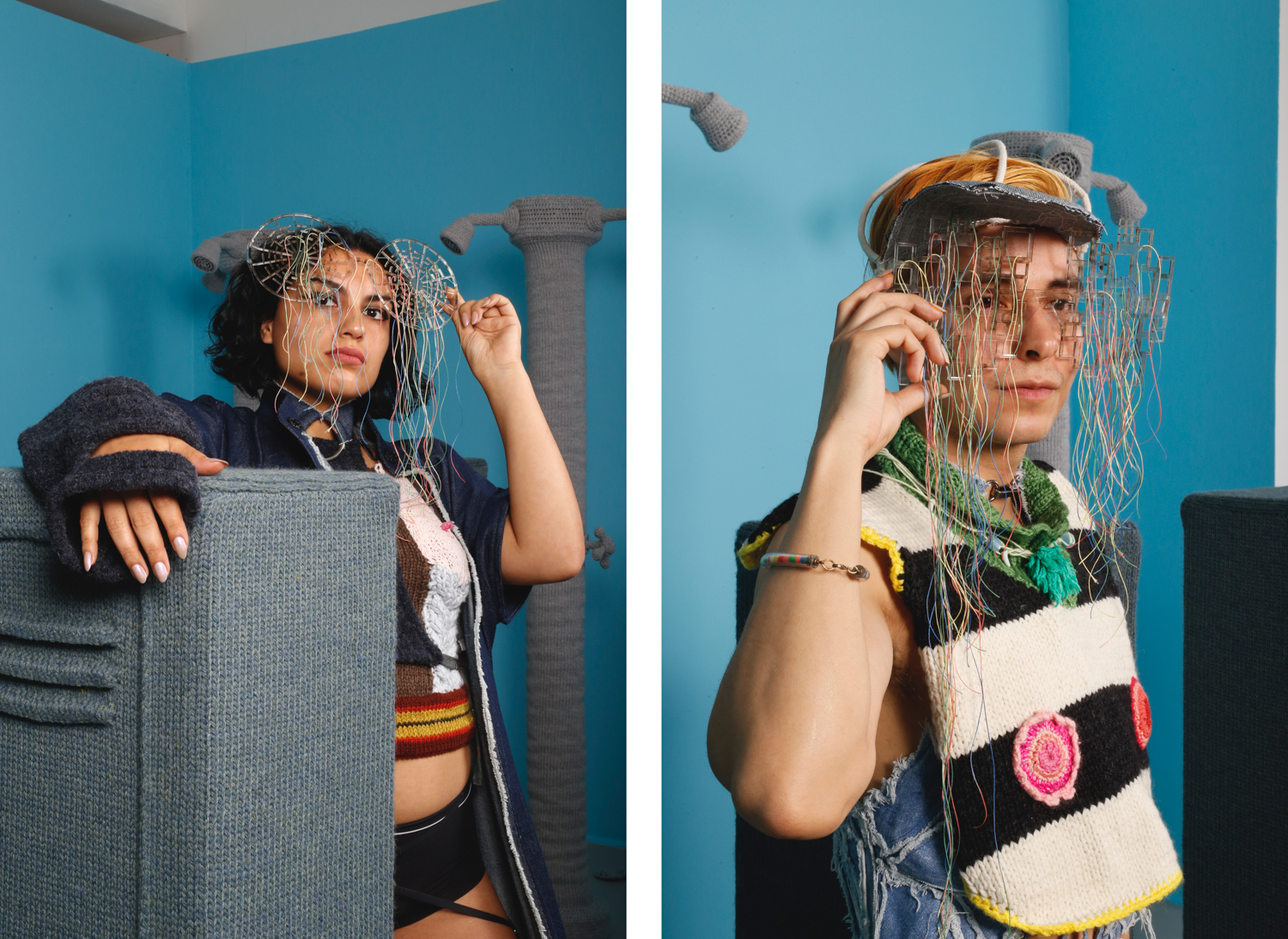
Buzz Slutzky: What is your favorite sweater from any time in your life and why?
I still have and wear around the house a lambswool cardigan from the Gap that I’ve had since I was in the 8th grade. It’s hunter green with a thick navy stripe across the chest. It’s itchy as hell, but I think it fulfills some kind of cheerleader fantasy where I’m wearing my boyfriend’s varsity sweater like the “good angel” Sandy in Grease before she discovered black spandex and red Candie’s heels.
Caroline Wells Chandler: Who was your biggest teenage crush?
It’s all of you! Art gives me goosebumps and makes me cry and puts my manties in a bunch, so I feel like a giddy teenager when I am with the work in Queer Threads.
To purchase Queer Threads please visit ammobooks.com/collections/books/products/queerthreads
Editorial Credits:
Posture’s third print issue — The Boss Issue — is now available for purchase. This 168-page magazine features exclusive interviews with artists, theorists, activists, and nightlife icons. The conversations dive deep into ideas of leadership, success, and organizing in queer/trans/non-binary and WOC communities. This issue also represents a new design direction for Posture, one that reflects the mission and purpose of the publication.
Order your copy today through our online shop: shop.posturemag.com.

